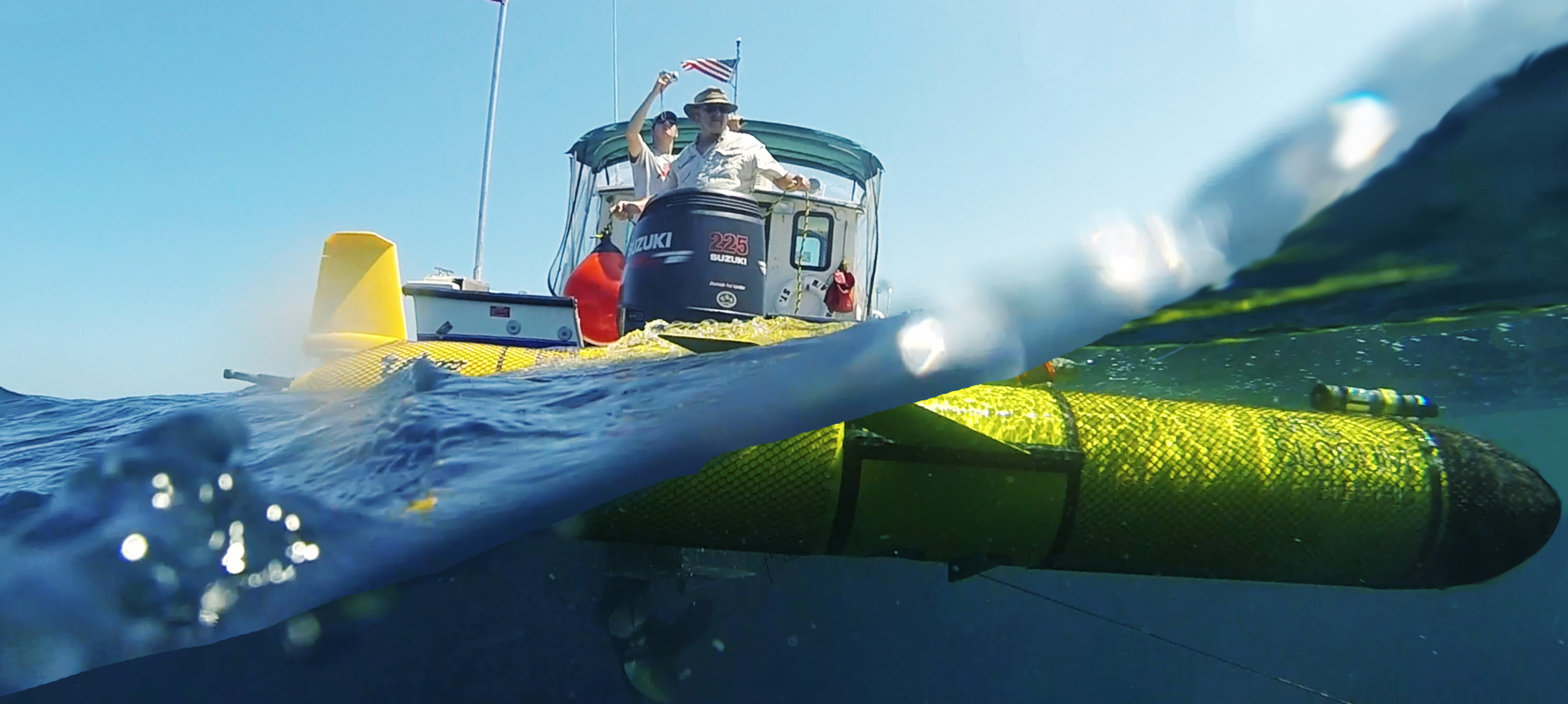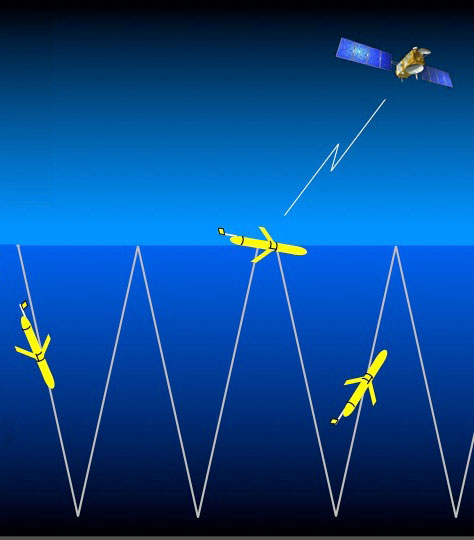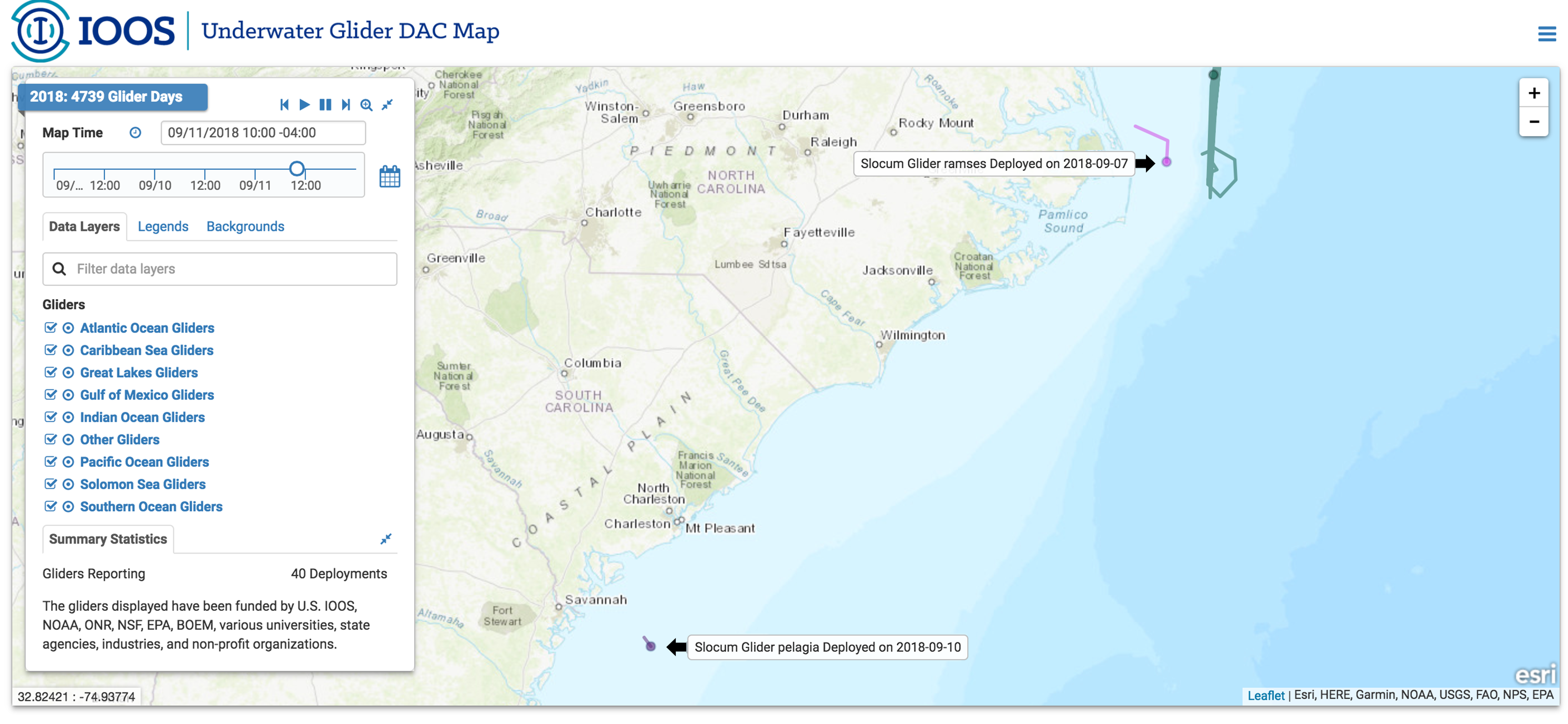
Image Credit: University of South Florida College of Marine Science
![]() Two gliders were deployed in the South Atlantic Bight ahead of Hurricane Florence making her way to the U.S. eastern seaboard. These gliders will gather vital oceanographic information before the potential life-threatening hurricane.
Two gliders were deployed in the South Atlantic Bight ahead of Hurricane Florence making her way to the U.S. eastern seaboard. These gliders will gather vital oceanographic information before the potential life-threatening hurricane.
The glider RAMSES was deployed off the North Carolina Outer Banks by Mike Muglia, Coastal Studies Institute. The second glider PELAGIA was deployed off the coast of South Carolina by Catherine Edwards, UGA Skidaway Institute of Oceanography. Glider operators from SkIO, UNC Chapel Hill, and the University of South Florida will track and pilot the gliders throughout the storm. RAMSES and PELAGIA are collecting and reporting water temperature and salinity measurements throughout the water column
Along the U.S. coastline, the Atlantic Ocean has temperature and salinity stratifications. Colder, denser water is beneath the warmer less dense surface waters. The gliders will help identify how hurricanes mix sub-surface and surface waters. This will enable scientists and meteorologist to determine if the cold water mixing into the warmer surface waters will weaken the hurricane (see NOAA story here).
About Gliders
 Gliders are autonomous underwater vehicles, often referred to as AUVs, that are remotely operated. They are equipped with sensors that can measure ocean properties such as water temperature, chlorophyll a, salinity and more.
Gliders are autonomous underwater vehicles, often referred to as AUVs, that are remotely operated. They are equipped with sensors that can measure ocean properties such as water temperature, chlorophyll a, salinity and more.
The glider moves in a sawtooth pattern, up and down the water column collecting data. Every so often – even during a hurricane – they surface and transmit data by satellite. Image credited to WHOI.
Data
Data will be used by hurricane forecasters to improve predications on Hurricane Florence’s track.
The glider tracks are available to view on U.S. IOOS Glider Map. Data will be available for viewing after the deployment.
Related news

New High Frequency Radar at the Dry Tortugas National Park Improves Ocean Surface Current Measurements Across the Straits of Florida
A new CODAR Low-Power SeaSonde HFR has been deployed by the University of South Florida at Fort Jefferson on Garden Key to measure surface currents to improve understanding and prediction of the Gulf of Mexico Loop Current.

President Biden Proposes Significant Budget Cuts to IOOS for 2025
President Biden’s recent 2025 budget proposal slashed the funding allocated for the Integrated Ocean Observing System (IOOS) by 76%, which would effectively shut down coastal and ocean observing efforts.

Webinar: NOAA Resources to Help Coastal Communities Understand Flood Risk
Join us Wednesday, March 27th at 12 PM Eastern Time for SECOORA's Coastal Observing in Your Community Webinar Series to hear from Doug Marcy with the NOAA Office for Coastal Management.
